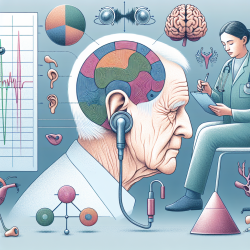As practitioners dedicated to the well-being of children, we are always on the lookout for research that can inform and enhance our practice. One such illuminating piece is "An Essay on the History of Epilepsy" from the Department of Pathology, Johns Hopkins University. This article offers invaluable insights that can be leveraged to improve therapeutic outcomes for children with epilepsy.
The history of epilepsy is a rich tapestry of evolving understanding and treatment approaches. By delving into this history, we can glean several key takeaways that can inform our practice today.
Key Insights from the History of Epilepsy
- Historical Context and Understanding: The article traces the historical context of epilepsy, showing how perceptions and treatments have evolved. Understanding this evolution helps us appreciate the current state of epilepsy management and recognize the importance of continuous learning and adaptation.
- The Importance of Accurate Diagnosis: Historically, epilepsy was often misdiagnosed due to limited medical knowledge. Today, accurate diagnosis is crucial for effective treatment. As practitioners, we must stay updated with the latest diagnostic tools and criteria to ensure we provide the best care.
- Holistic Treatment Approaches: The article highlights the shift from purely medical treatments to more holistic approaches that include psychological and social support. This aligns with modern practices in speech-language pathology, where we consider the whole child, including their social and emotional needs.
- Advancements in Treatment: The history of epilepsy treatment shows significant advancements, from rudimentary methods to sophisticated medical interventions. Staying informed about these advancements enables us to recommend the most effective treatments and advocate for our patients.
Implementing Research Outcomes in Practice
Here are some practical ways to incorporate the insights from this research into your practice:
- Stay Informed: Regularly update your knowledge about epilepsy and its treatments. Attend workshops, webinars, and read current research.
- Holistic Assessments: Conduct comprehensive assessments that consider not just the medical aspects of epilepsy but also the psychological and social factors affecting the child.
- Collaborate with Other Professionals: Work closely with neurologists, psychologists, and educators to create a multidisciplinary treatment plan.
- Advocate for Your Patients: Use your knowledge to advocate for better resources and support for children with epilepsy in schools and communities.
Encouraging Further Research
The history of epilepsy is a testament to the power of research in transforming medical practice. As practitioners, we should not only rely on existing research but also contribute to it. Consider conducting your own studies or collaborating with researchers to explore new treatment methods and improve outcomes for children with epilepsy.
To read the original research paper, please follow this link: An Essay on the History of Epilepsy*From the Department of Pathology, Johns Hopkins University.










